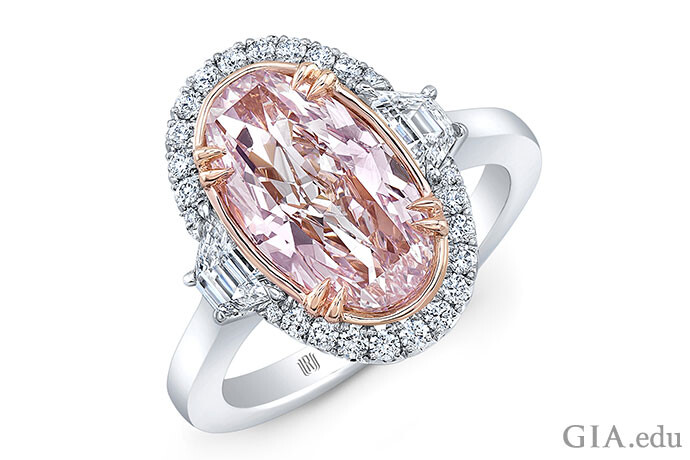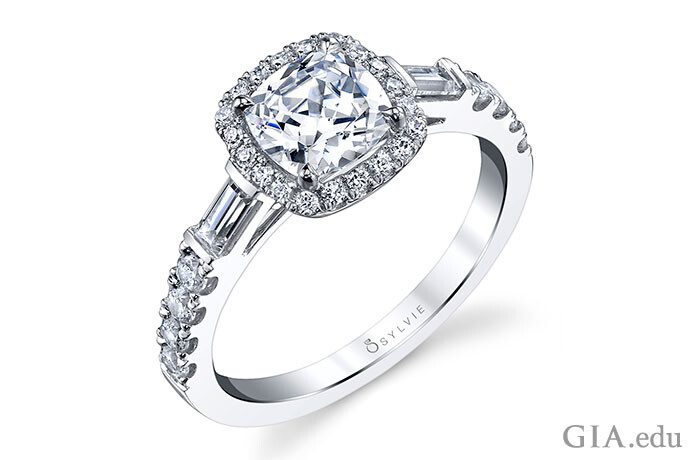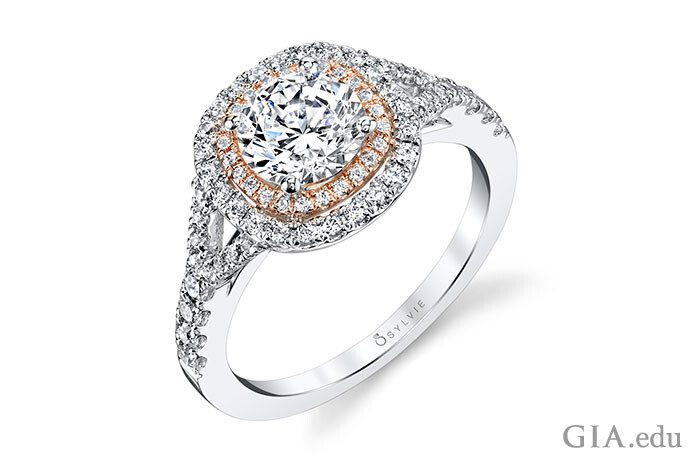
The word pavé comes from the French and means almost the same as it does in English, paved or made up of a series of small stones in a neat configuration that covers a larger area. The accent on the e means that the e is not silent but is pronounced as an ‘ay’ sound – so: pah-vay.
The word pavé refers to a setting rather than a specific stone, and, in fact, pavé diamonds are almost always plural as a pavé setting requires many small stones. There are a number of ways a piece of jewellery can benefit from a pavé setting. Let us take a look at some of them.

The most common setting where you will see a pavé feature is on the band of a ring, usually one with a larger stone or set of stones in the centre. The pavé decoration can extend a short way from the centrepiece, just three or four tiny stones set next to one another in either direction, or it can extend the whole way around the band. See below for ways in which the tiny stones are set into the band.
Pavé stones are used to great effect with halo ring settings. With these, the main central stone is encircled by a band in which a host of small stones are arranged giving the impression of a much larger and more expensive stone and giving out a gorgeous array of rainbow reflections. Not all halo rings use pavé settings, but many do because of the neatness and closeness with which the stones can be arranged to give the impression of being a single stone when taken with the central stone.
Pavé settings tend to use what used to be called diamond chips – and what are now called ‘accent’ or ‘melee’ stones. Accent stones tend to be between 0.25 and 0.1 of a carat, and melee stones are even smaller, from 0.001 of a carat up to about 0.18 of a carat. Pavé settings tend to use stones that are 0.1 or one-tenth of a carat – big enough to see and admire, while being too small to use in standalone pieces of jewellery.
You may have seen the above terms and become confused, wondering if there are different sizes of pavé settings that you should be looking out for. For the most part, while the two terms do mean very different things, you should allow the aesthetics to rule and choose the jewellery that pleases you, without worrying too much about the minutiae of the pavé setting.
Micro pavé is the term used when the setting has been completed using a microscope, because the stones, the setting and the finished effect are on such a small scale that it would not be possible to complete it without using considerable magnification. Micro pavé is very hard on jewellers’ eyes, and often micro pavé jewellers have a time-limited career of five to ten years before their sight deteriorates to the point that they can no longer work at that scale.
Petite pavé seems like it should be a step up from micro pavé, but instead, this term refers to the tiny prongs used in pavé settings rather than the stones, as in micro pavé! Pavé stones are held in place with a dab of molten metal or by a miniature prong setting, just like the larger ones seen on solitaire stones. Petite pavé refers specifically to the size prong used for pavé settings.

All diamonds can be used in a pavé setting, but it is a useful and attractive way to use stones that are good quality but too small for a traditional setting. Smaller diamonds are also cheaper, and a pavé setting is a good way to make a modest diamond look great and shine better.
This is a collaborative post.